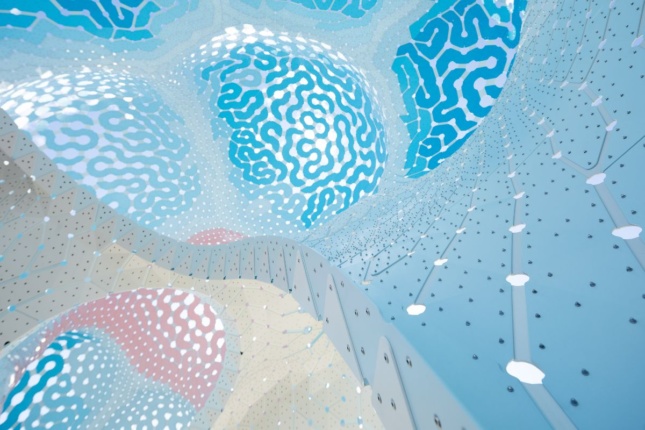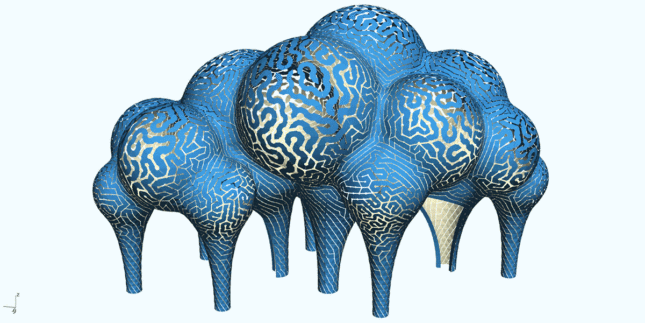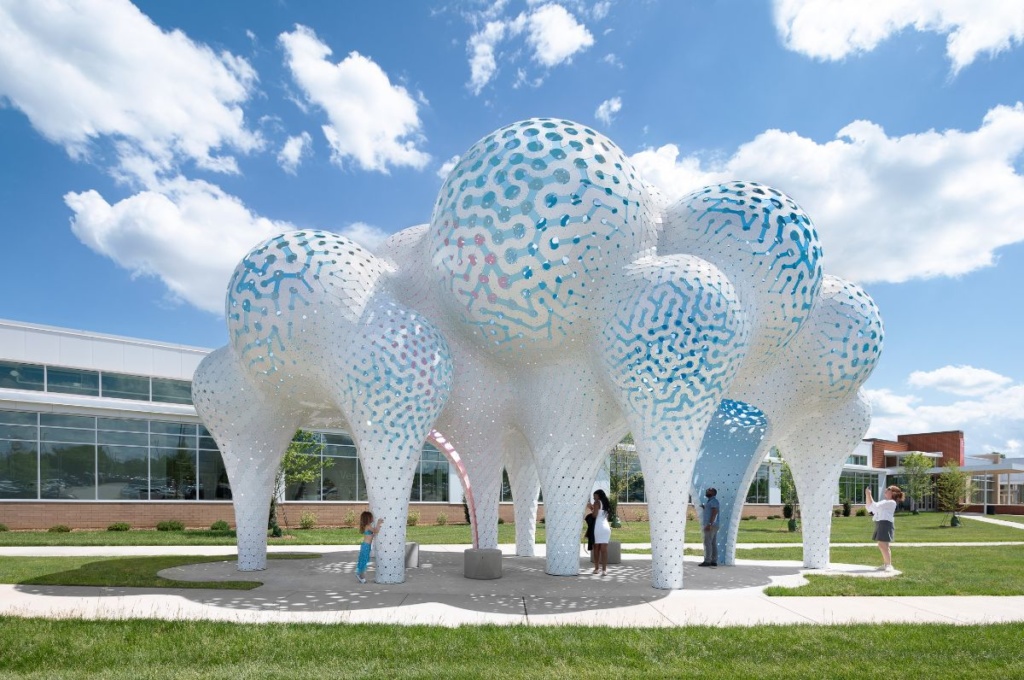At the Valerie C. Woodard Center, a community resource center in Charlotte, North Carolina, a new pavilion seems to rise right out of the earth. Called Pillars of Dreams, the continuous 26-foot-tall cloud-like structure is the creation of MARC FORNES / THEVERYMANY, which is known for its complex, computationally-designed structures made of interlocking linear panels or “stripes.”
In Pillars of Dreams, as with other of the firm’s projects, these stripes function not as just exterior and interior walls, but as the structure itself. “The skin of the project is everything—it’s your envelope, your experience, and foremost your structure,” explained Marc Fornes. “All projects we do are creating structure through geometry—self-supported structures.”

Pillars of Dream is constructed with stripes of ultra-thin aluminum sheets, laser-cut into “labyrinthine” bands of 3-millimeter, two-layer stripes. “It’s actually a giant 3D puzzle,” Fornes said.
The design process for Pillars of Dreams represents a continuation and an evolution of more than 15 years of practice, which was inspired originally as a reaction to the triangle-driven geometries used in the 1990s and 2000s to develop complex architectural forms. This approach, which mirrored the polygon meshes of some digital models, resulted in a huge number of panels that take a great amount of time to assemble. The goal of working with the stripes is to speed up construction and have fewer elements to work with.

Pillars of Dreams was created to inspire visitors to “carry on a sort of dreaming, escapism.” It operates at a variety of scales—appearing one way to someone driving by, another as it’s approached, and then surprises visitors by allowing them to enter its interior, the colored gradient that is created by different shades and shapes inside and out evolving as one gets closer. It is, according to Fornes, “a universe curved in all directions.”
